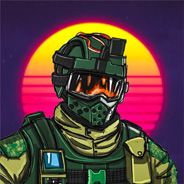Сократить текст(50-70 слов) Humanitarian action is fundamental to realizing the rights of every child and therefore central to UNICEF’s mandate. UNICEF is working to deliver a faster, more effective and principled humanitarian response, in line with its Core Commitments for Children in Humanitarian Action and the UNICEF Strategic Plan 2018–2021. Country-level humanitarian action is supported by UNICEF’s seven regional offices and 10 headquarters divisions. This involves facilitating inter-agency coordination and partnerships; contributing to strategic response plans; leading/co-leading global clusters for five sectors; facilitating policy guidance and strategic dialogue; mobilizing human and financial resources; and monitoring and reporting on humanitarian results.
The Office of Emergency Programmes, including a security team and the 24-hour, 7-day Operations Centre, coordinates UNICEF’s global support. In 2018, the cost of this support is estimated at US$54.8 million, 4 1.5 per cent of UNICEF’s overall appeal.
Global support to the field in 2017
Seven major emergencies required organization-wide mobilization in 2017: the protracted conflicts in Iraq, north-east Nigeria, South Sudan, the Syrian Arab Republic and neighbouring countries and Yemen; and the emerging crises in Bangladesh and the Democratic Republic of the Congo.
Investments in UNICEF’s global support translated into the following achievements in 2017:
Supplies procured for countries with Level 2 and Level 3 emergencies totalled US$909.3 million in 2017.5
UNICEF’s Emergency Response Team – comprising 14 staff with specialized skills in emergency coordination, programming and operations – undertook 58 missions to 17 countries, four regional offices and four headquarters locations, totalling 2,001 days in 2017. Of these missions, 14 (totalling 86 days) were for the provision and/or receipt of capacity building/training. Standby partners continue to represent a significant source of capacity.
UNICEF deployed 166 personnel to country offices in 2017 through agreements with 30 standby partner organizations. Fifty-five per cent of these deployments supported Level 2 and Level 3 emergencies.
In 2017, UNICEF’s global cluster rapid response teams supported 24 countries, including seven Level 3 emergencies, through 79 missions totalling more than 3,122 days.
The Emergency Programme Fund – a revolving fund disbursed to field offices within 48 hours of a sudden humanitarian crisis, before donor resources are available and to underfunded emergencies – distributed US$73.7 million to 20 country offices and three regional offices in 2017.
As part of the Health Emergencies Preparedness Initiative, UNICEF has developed cross-sectoral guidance and resources for 31 priority diseases, which were selected for their potential for becoming epidemics/pandemics and impacting children. These resources supported UNICEF’s responses to the 2017 outbreaks of Ebola, Marburg and the plague in the Democratic Republic of the Congo, Uganda and Madagascar, respectively.
UNICEF’s Emergency Preparedness Platform – a system for enhancing the organization’s early warning and preparedness – was rolled out to 40 country offices in 2017. The platform will aid country offices in analysing risks, undertaking selfassessments, and identifying high-return actions that will enhance preparedness at the country level.
Under the auspices of the Communicating with Disaster Affected Communities Network, UNICEF and partners8 established the Communication and Community Engagement Initiative. The Initiative aims to organize a collective service for a more systematic and coordinated approach to community engagement with affected people.
285
326
Ответы на вопрос:
Реши свою проблему, спроси otvet5GPT
-
Быстро
Мгновенный ответ на твой вопрос -
Точно
Бот обладает знаниями во всех сферах -
Бесплатно
Задай вопрос и получи ответ бесплатно

Популярно: Английский язык
-
Here are the answers to some question. write the guestions 1.on top of...
 voprooos06.03.2022 08:38
voprooos06.03.2022 08:38 -
Как написать на 5 часов и 45 минут...
 dedavydov1207.01.2021 13:18
dedavydov1207.01.2021 13:18 -
Задайте 3 вопроса к этому тексту на языке why throw away so much? many...
 fox205502.02.2021 04:43
fox205502.02.2021 04:43 -
Составьте предложения из предложенных слов. (заранее ) 1. creative, many,...
 Dimo55816.02.2022 18:37
Dimo55816.02.2022 18:37 -
Change from direct into indirect speech; 1)the boy said i have done my...
 plagods22.04.2021 14:06
plagods22.04.2021 14:06 -
Transform direct speech into inderect 1- kevin sais i have lost my watch...
 ЯрикФролов03.07.2020 10:31
ЯрикФролов03.07.2020 10:31 -
natalya _a tv in her room. 1_ a very good camera. he-a green belt. we...
 Lerka2004love25.03.2021 07:42
Lerka2004love25.03.2021 07:42 -
There are around 3 million a year какое слово надо добавить...
 linaserdyuk1323.06.2021 08:26
linaserdyuk1323.06.2021 08:26 -
3.Choose the correct words. (10 marks) What time are you going / do...
 Ромчик041230.11.2021 01:25
Ромчик041230.11.2021 01:25 -
Complete the sentences....
 Валерия170427.02.2021 12:38
Валерия170427.02.2021 12:38

Есть вопросы?
-
Как otvet5GPT работает?
otvet5GPT использует большую языковую модель вместе с базой данных GPT для обеспечения высококачественных образовательных результатов. otvet5GPT действует как доступный академический ресурс вне класса. -
Сколько это стоит?
Проект находиться на стадии тестирования и все услуги бесплатны. -
Могу ли я использовать otvet5GPT в школе?
Конечно! Нейросеть может помочь вам делать конспекты лекций, придумывать идеи в классе и многое другое! -
В чем отличия от ChatGPT?
otvet5GPT черпает академические источники из собственной базы данных и предназначен специально для студентов. otvet5GPT также адаптируется к вашему стилю письма, предоставляя ряд образовательных инструментов, предназначенных для улучшения обучения.
